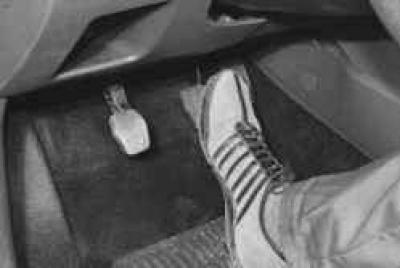
1. The reason for the loss of braking efficiency may be the unsatisfactory operation of the vacuum booster. For its express check, press the brake pedal several times with the engine off to remove the vacuum in the amplifier, and then, while holding the pedal, start the engine. If the pedal drops a little after starting the engine, the vacuum booster is working.
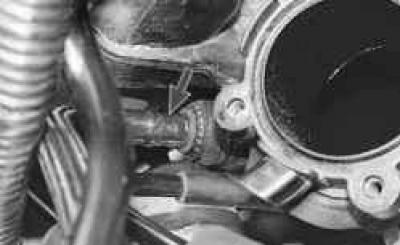
2. If the pedal remains motionless, check the integrity and reliability of the connection of the vacuum booster hose to the fitting on the engine intake pipe..
NOTE: Throttle assembly removed for clarity.
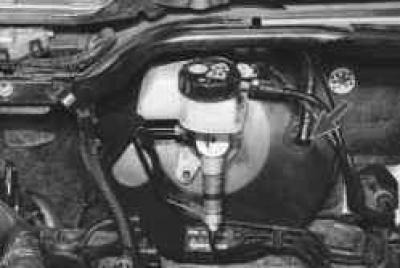
3.... and with an amplifier. Replace or repair defective hose. If the hose is good, the vacuum booster needs to be replaced (cm. «Replacing the vacuum booster»).
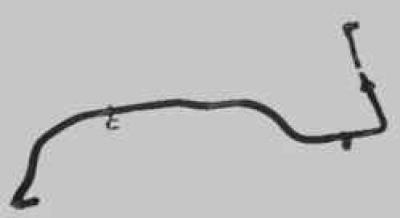
NOTE: The vacuum booster hose is made in one piece with the check valve. Check if it works (cm. «Checking the operation of the vacuum brake booster»). If the non-return valve is defective, replace the vacuum booster hose assembly.
If braking is accompanied by a beating and pulsation of the brake pedal, you should first check the condition of the front disc brakes.
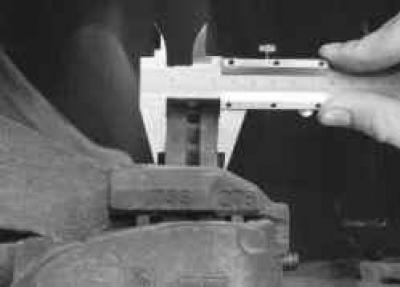
4. Having installed the car on a jack, one by one remove the front wheels and inspect the brake discs. The thickness of the brake disc must be at least 23.0 mm, the surface of the disc must be even and smooth on both sides. If the surface of the disc is covered with rust in places, which usually happens after a long parking of the car with wet brakes, try cleaning the working surface with a fine emery cloth. If this procedure does not help, you will have to give the discs for grinding or replace them with new ones.
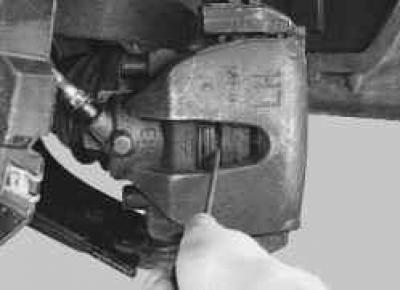
5. Check up mobility of the piston of the brake mechanism. To do this, try to move the piston with a screwdriver. If the piston cannot be moved, then it is stuck in the brake cylinder.
WARNING: A jammed brake cylinder piston causes the corresponding wheel to brake continuously when the pedal is released and the vehicle to skid when braking.
If braking is accompanied by car jerks and a creak in the area of the rear wheels, if the rear of the car skids during heavy braking, check the condition of the rear wheel drum brakes.
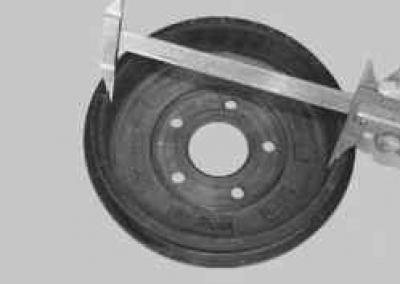
6. After placing the car on a jack, remove the rear wheels one by one, remove the brake drums (cm. «Removal and installation of a brake drum») and measure the diameters of their working surfaces. The inner diameter of the drum must be no more than 230.2 mm, the working surface of the drum must be even and smooth, without ring marks and clearly visible ovality (ovality, which should be no more than 0.5 mm, can be determined by the unevenly worn working surface of the drum). If the inner diameter of the drum is larger than the permissible one, the annular risks are very deep or the uneven wear of the working surface is clearly visible, the drum will have to be replaced with a new one.
NOTE: If the vehicle is equipped with rear disc brakes, check the thickness of the disc in the same way as you did for the front brake (see point 4). The thickness of the brake disc must be at least 9 mm.
TIP: The parking brake activates the rear brakes via cables connecting the parking brake lever and the brake pad controls. Many drivers try to use the parking brake as little as possible in order to prolong it «life», and achieve the opposite result. If you do not use the parking brake, dirt and moisture stagnate in the sheaths of the cables, the cables become rusty, stop moving and break. Therefore, use the parking brake when necessary, but do not forget to adjust its drive from time to time (cm. «Parking brake actuator adjustment»).
Visitor comments